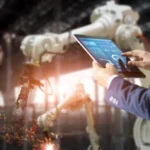
3D Printing for Beginners: How to Get Started
August 28, 20223D printing is a technology that can be used to create objects from a digital file. It is a type of printing that uses layers of material to create an object from a digital file. 3D printing has many applications, including manufacturing, engineering, and creativity. This article will help beginners get started with 3D printing.
what is 3D printing ?
3D printing is a versatile technology that is being used more and more in the manufacturing industry. It is a method of creating a three dimensional object layer-by-layer using a computer created design. The advantages of 3D printing are that it is fast and easy to create a prototype, it is cheap to produce, and it is not limited by the size or shape of the object that can be created.
can they 3 d print organs ?
3D printing is quickly becoming a ubiquitous technology, with applications in numerous industries. One of the latest areas of exploration is 3D printing organs.
There are many obstacles to overcome before 3D printing organs becomes a reality, but the potential benefits are enormous. 3D printing could significantly reduce the cost of organs and improve their quality. It could also help to solve the organ donor shortage, as people could be printed with a compatible organ.
There are many questions remaining to be answered before 3D printing organs becomes a reality, but the potential benefits are clear. It’s an exciting new technology that holds promise for both medical and industrial applications.
how much do 3D printed organ cost ?
The cost of 3D printed organs is one of the more hotly debated topics in the field of medical technology. Some experts estimate that the price tag for a 3D bioprinter can be as high as $300,000, while others say that a 3D printer used to create 3D printed organs can cost as little as $10,000.
The price of 3D printed organs is expected to drop further as the technology matures, however, at present the cost of a 3D bioprinter is significantly higher than the cost of a 3D printer used to create 3D printed organs. This is likely to change in the future as the technology continues to improve.
why are printed organs good ?
The advantage of printed organs is that they are capable of mass-producing scaffold structures with a high degree of anatomical precision. This means that printed
organs can be customized to fit the specific needs of each patient.
Another advantage of printed organs is that they are not sensitive to environmental factors. This means that printed organs can be stored indefinitely without risk of damage.
Organ printing is still in its early stages, but the potential benefits are clear. If the technology can be perfected, printed organs could revolutionize the way organs are produced and delivered to patients.
what are the isks of 3d printed organ ?
3D printing technology is a fast-moving field that is constantly evolving. Some of the latest developments include the development of 3D printed organs. However, before you consider 3D printing your next project, you need to be aware of the risks involved.
One of the risks of 3D printing is the potential for implant dislodgement and migration. This can be a dangerous situation because it can result in teratoma, a cancerous tumor, growing inside your body. Dislodgement and migration can also lead to other health problems, such as infection.
If you are interested in 3D printing your own organ, be sure to discuss the risks involved with your doctor first. There is no guarantee that using 3D printing technology will be safe, but it is a very exciting and potentially life-saving technology.
how much does a 3d printed heart cost ?
But in the grand scheme of a complex heart operation, $2,000 is a minimal investment. “So we’re actually thinking there are a number of applications where the more realism with the collagen is probably worth it,” says Feinberg.
One of the first applications that Feinberg and his team are thinking of is using 3D printing technology to create custom prosthetic hearts. “The more realistic the heart, the more likely patients are going to feel less anxiety and less self-conscious about their prosthetic,” Feinberg says.
However, the cost of 3D printing technology is still relatively high, so it’s important to find applications for it that are worth the investment. Feinberg is confident that prosthetic heart technology will be worth the cost in the future, and he believes that the benefits will be seen by patients and doctors alike.
Can DNA be 3D printed?
The possibilities of what can be 3D printed are endless, and this is only the beginning. Researchers at the University have embedded a 3D-printed plastic white rabbit with DNA that contains instructions for printing new bunnies. The process of printing the rabbit uses a standard 3D printer and is as easy as loading the file into the printer and hitting the print button.
The potential applications of this technology are endless. Researchers could use this technology to create custom prosthetic limbs, or to create new medical devices. The possibilities are endless and this is just the beginning of what can be 3D printed.
negative inpact of 3D PRINT ?
3D printing is a process by which physical objects are made from a digital model or a series of digital models. The technology has been around for a few years now, but has only recently become more accessible and affordable.
There are many benefits to using 3D printing, but there are also some drawbacks. Here are a few of the most common cons of 3D printing:
1. Restricted build size:
3D printing is limited in terms of the size and shape of the objects that can be created. This can be a major limitation if you want to create something that is too large or too complex to be created using traditional methods.
2. Large volumes:
3D printing can produce large volumes of objects, which can be useful in certain situations. However, this can also be a drawback if you need precise measurements or if you need small quantities of specific objects.
3. Part structure:
3D printing is not as accurate as traditional manufacturing methods when it comes to the way objects are constructed. This can lead to design inaccuracies and incorrect parts.
4. Reduction in manufacturing jobs:
3D printing can lead to a reduction in manufacturing jobs, as it can be used to create objects that are typically manufactured using traditional methods.
5. Copyright issues:
3D printing can be used to create objects that are copyrighted, which can lead to legal issues.
Despite these cons, there are many benefits to using 3D printing. In particular, it can be used to create complex objects that are difficult or impossible to create using other methods. Additionally, 3D printing can be used to create large quantities of objects, which can be useful in certain situations.
3D printing is a great way to create customized objects quickly and easily. If you’re new to the process, start with some basics and work your way up. Once you have a basic understanding, you can start exploring the many possibilities 3D printing offers.









